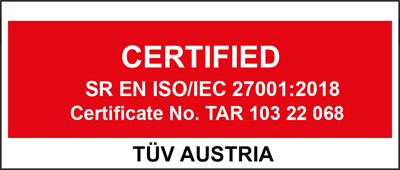Blog

What is a standard operating procedure (SOP) and how to write one (template provided)
A standard operating procedure (SOP) is a set of instructions that describes each step of a process carried out in a company. Since they are intended to guide employees to act in a manner that is consistent with the company's policies, principles and objectives, standard operating procedures must be detailed, easy to understand even by new employees, and easy to access.
While that may sound easy to do at first glance, documenting your business processes into effective SOPs and managing the SOPs can be challenging in a few different ways. To make the most of your documenting efforts, this article will describe certain steps you can follow and suggest different tools you can use that can help you work smarter, not harder, when writing SOPs. But first, let’s take a look at how standard operating procedures can benefit your business.
Why do you need standard operating procedures?
First of all, you might ask yourself if you need SOPs. The simple answer to this question is: yes. Why? Because when created and managed properly, SOPs will make your business more efficient, no matter the size of the business or the industry you are in. Procedures are essential instructions that help everyone in your organization, as they:
- Improve performance. The steps described in a standard operating procedure represent a clear action plan for your employees, enabling them to better understand how to act in different situations. SOPs give them the information needed to achieve their goals more easily, and help them avoid confusion and errors.
- Ensure compliance with regulations. SOPs are vital in those industries where employees need to closely adhere to specific rules and regulations. In the construction sector, for example, compliance with regulations is essential. SOPs can provide important instructions and assist in the training of workers on potential hazards in the workplace, help employers avoid large fines for breaching health and safety regulations, keep workers safe, and even lower training costs.
- Help you produce great results consistently. When your team knows the steps to follow when dealing with various situations, they are more knowleadgeable and more confident, they collaborate better, and use time-tested solutions to the problems they encounter. For example, by creating an SOP on how to answer customers’ calls, you will help your team have fluid and productive conversations.
- Keep the company’s know-how accessible. When certain employees go on holiday or they are unavailable to provide needed information, SOPs will provide a great backup. When employees move on, retire, or they are promoted, SOPs will help you keep their knowledge within the organization and easily communicate it to new employees.
- Make training easier. Following the clear instructions of an SOP, the training process of new employees can be smoother and faster. New hires will also need some time to really understand what the job entails and what is expected of them. This process will be less stressful and less time-consuming when they do not have to figure out where and how to look for different kinds of information, and can easily access the company’s SOPs instead.
- Help you save resources. Guided by SOPs, employees can act independently and efficiently, get faster results and make fewer mistakes. This will also contribute to employee satisfaction and a lower turnover rate. By default, the company will save the costs of recruiting, hiring and training new employees, and get better results with fewer resources.
How to write a standard operating procedure
Not all SOPs will look the same – many of them will depend on the specific way you operate your business. Some SOPs will be a simple and straightforward checklist, while others might need visual graphs to assist the user in understanding its content. Here are a few tips that can help you get started on your new SOPs:
Gather information
Take a look at the processes your company goes through on a daily basis and choose those processes which need specific steps to be carried out effectively.
Write down everything you know about each process. You might find it helpful to use our downloadable SOP template to begin to document these processes thoroughly. Talk to the departament or teams involved in each of the processes you have chosen to describe and use their feedback to update the content and structure of the SOP you are creating.
Make the SOPs easily accessible
You put a lot of effort into documentation and created detailed SOPs. Now, the next step is to make the SOPs available to employees. Although you can print them and create an SOP manual, or store them in a note-taking program, once you have multiple procedures these methods will likely make the SOPs difficult to find, edit, or replace.
Obviously, the more difficult the access to SOPs, the less likely that your employees will follow them. So, how can you make SOPs more accessible? An automated procedure management system can help you easily create, store, and communicate the procedures to employees. You will also be able to ensure confidentiality by setting up limited access to procedures. Furthermore, the system can really simplify the next step we will describe – reviewing your SOPs.
Review and optimize
As your implement new procedures you will likely notice they need to be refined and adjusted for more clarity. Furthermore, as your business grows and you add and improve different processes, you will need to create new SOPs and update old ones. This can be a time-consuming process, especially if you do not use automated tools, but keeping your SOPs updated is worthwhile, as they communicate important process changes to employees.
Conclusion
Standard operating procedures are present in every business, no matter its size, because each business functions on repeatable processes. However, when you document these processes and make this knowledge available you can ensure that the processes are carried out seamlessly and reliably.
Ready to take your business to the next level and create your SOPs? Access the SOP management plugin now to easily design, manage and distribute solid SOPs which ensure that consistency and quality are at the heart of your business.





